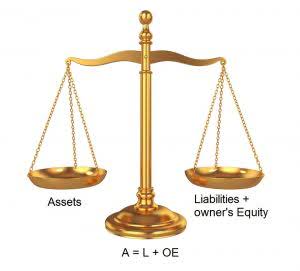Content

Then, you would enter the corresponding numbers from the income statement in cells B2 and B3, which were next to those cells. Non-operating income is accounted https://www.bookstime.com/ for when calculating EBIT in certain estimations. Lenders may compute DSCR in a variety of ways, and borrowers should be aware of this possibility.
Therefore the lender will calculate DSCR to determine whether to grant a loan to the real estate developer. In either case, a company with a debt-service coverage ratio of less than 1.00 does not generate enough revenue to cover its minimum debt expenses. In terms of business management or investment, this represents a risky prospect since even a brief period of lower-than-average income could spell disaster. More than 1 – A debt service coverage ratio of more than 1 indicates that your net operating income exceeds your current debt obligations.
DSCR estimates may be used by management to compare its performance to that of its competitors, as well as to determine how well those competitors may be utilizing loans to support corporate development. The DSCR is a more precise analytical method for assessing a company's long-term financial health. Compared to the interest coverage ratio, DSCR is a more thorough and careful calculation. The DSCR is an effective annualized ratio that typically represents a change throughout the 12-month period. Although other financial measures frequently give a unified view of a company's health, DSCR is rather considered a more true depiction of a company's activities.
Most lenders do not welcome a negative cash flow, but if you can show you have additional funds available, you might be able to swing the deal. Most likely, however, the lender would https://www.bookstime.com/articles/debt-service-coverage-ratio balk or insist on a substantially larger equity contribution. Experts consider a DSCR up to 1.1 to be shaky, because it leaves little room for error in estimating NOI or EBITDA.
Typically, six months after a year’s worth of debt service payments can be placed in a debt service reserve account. Suppose a company has a significantly higher Debt-service coverage ratio than most of its competitors, which usually indicates superior debt management. An analyst from the financial sector may also want to look at a company’s ratio over time to see whether the trend is improving or going downward means it’s getting the contribution margin worse. In either scenario, a business with a debt-service coverage ratio under 1.00 does not make enough money to pay its minimal debt obligations. The interest coverage ratio and the DSCR are different because the former only accounts for interest costs. As a result, a more accurate view of the company's capacity to fulfill its obligations is provided by DSCR.
Once you know how to format the formula in Excel, you can analyze the DSCR of various companies to compare and contrast before choosing to invest in one of those stocks.
DSCR is largely determined using accrual-based accounting principles, despite debt and loans fundamentally being dependent on required cash payments. It is possible to modify the DSCR calculation to take into account net operating income, EBIT, or EBITDA (depending on the lender's requirements). The company's income may be overestimated if operating income, EBIT, or EBITDA is employed since not all costs are considered. You can't just run an equation that splits net operating income by debt service to build a dynamic DSCR calculation in Excel. The labels of the next two cells, A2 and A3, should instead record "net operating income" and "debt service". Assets America was responsible for arranging financing for two of my multi million dollar commercial projects.
In commercial real estate, interested parties commonly use DSCR for projects containing an income component. Often, you will come across a variation of the formula in which earnings before interest, taxes, depreciation and amortization (EBITDA) substitutes for NOI. EBITDA excludes non-cash expenses such as amortization and depreciation that don’t affect cash flow. Therefore, EBITDA is a better expression of the cash available to pay off debt. To calculate the interest coverage ratio, one may divide the EBIT for the specified period by the total of the interest payments due for the same duration.